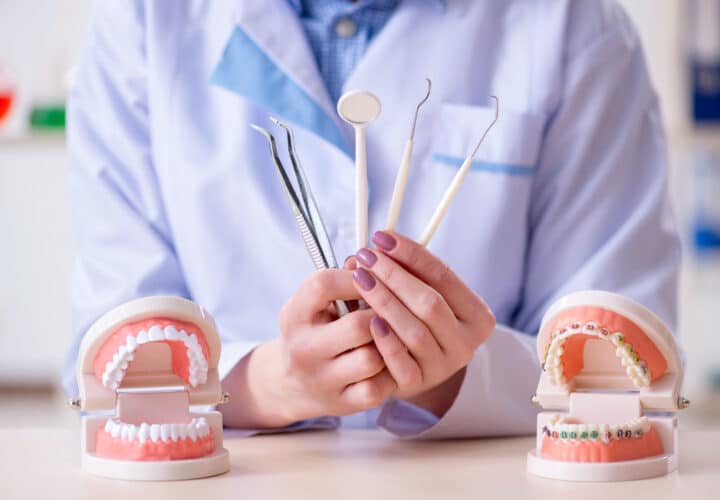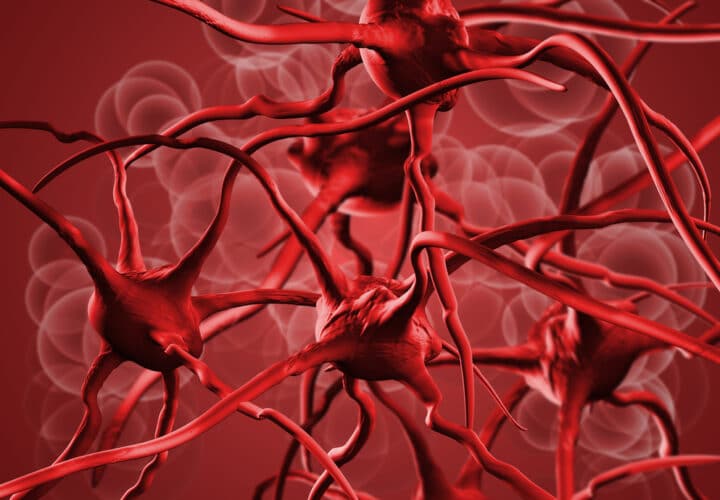We know that regular brushing and keeping up with oral hygiene can save our teeth. But can it help preserve memory, too?
A new study from the University of Louisville School of Dentistry in Kentucky found that the same bacteria involved in gum disease may play a role in Alzheimer’s—and they demonstrated exactly how bacteria from the mouth finds its way to the brain in a mouse model.
The bacterium Porphyromonas gingivalis is the culprit behind gum diseases like periodontitis, an infection of the gums and surrounding tissue that attacks the bones that support teeth. It’s the same bacteria that scientists found in the brain samples of people with Alzheimer’s disease.
“Oral hygiene is very important throughout our life, not only for having a beautiful smile but also to decrease the risk of many serious diseases,” said Jan Potempa, Ph.D. a professor at the University of Louisville School of Dentistry and head of the department of microbiology at Jagiellonian University in Krakow, Poland. “People with genetic risk factors that make them susceptible to rheumatoid arthritis or Alzheimer’s disease should be extremely concerned with preventing gum disease.”
Researchers compared brain samples of people with and without Alzheimer’s who were around the same age when they died. The bacteria and a toxin it produces called gingipains were more prevalent in those diagnosed with Alzheimer’s. The same was true for people with rheumatoid arthritis, an inflammatory autoimmune disease, and people with aspiration pneumonia, an infection of the lungs caused by inhaling food particles or saliva rather than swallowing it.
Researchers are hopeful that they may have identified a potential target for drugs aiming to stop or slow the progression of diseases like Alzheimer’s.
“P. gingivalis‘s main toxins, the enzymes the bacterium need to exert its devilish tasks, are good targets for potential new medical interventions to counteract a variety of diseases,” said Potempa. “The beauty of such approaches in comparison to antibiotics is that such interventions are aimed only at key pathogens, leaving alone good, commensal bacteria, which we need.”
The bacteria is common enough—about one in five people under 30 have some level of P. gingivalis lurking in their gums. If it grows out of control, it triggers an immune response that increases inflammation—a key factor related to Alzheimer’s.
The researchers showed that P. gingivalis can easily travel from the mouth to the brain in a mouse model when they infected mice gums with the bacteria and later found it in the brain. They saw that P. gingivalis was also associated with an increase in beta-amyloid, a protein that accumulates into toxic plaques in the brains of Alzheimer’s patients. However, they demonstrated that this transfer can be blocked in mice by a drug called COR388, which is currently in phase 1 clinical trials for Alzheimer’s disease.
The best way to prevent gum disease, according to the National Institute of Dental and Craniofacial Research, is to visit a dentist yearly, brush twice per day, floss regularly and refrain from smoking.
[ Next: Researchers To Test New Alzheimer’s Drug Targeting Inflammation in Humans ]



An interesting note about this finding of microbial organisms in the brains of individuals with AD; one of the characteristics of successful microbes is their ability to out-compete their host for essential nutrients, the most basic of which is usually glucose. Consider that in our body at rest, about 2/3 of the glucose in the blood ends up in the brain to provide essential fuel for its operations; that means that most glucose in the blood tends to find its way to the blood-brain barrier (BBB), through which it has to pass before it can enter the CNS. Given this reality, hanging around the BBB is a perfect place for microbes looking for sustenance.
When we are in good health, the BBB does an excellent job keeping the bugs out. Having a load of bugs swabbed onto gums would allow some access to the general circulation through the oral capillary bed. There would even be access possible to the basement membrane of the brain via the olfactory bulb which processes information from smells (mice are incessant sniffers, and this would facilitate this route). A daily inoculum of glucose-grabbing bugs could help drive the Alzheimer’s disease process. Given all this, it is unclear to what degree we can attribute AD nastiness to bugs introduced in such a way.
All being said, taking care of your teeth is definitely an element in the picture, with poor oral hygiene likely to be a co-morbidity contributing to the risk of AD.